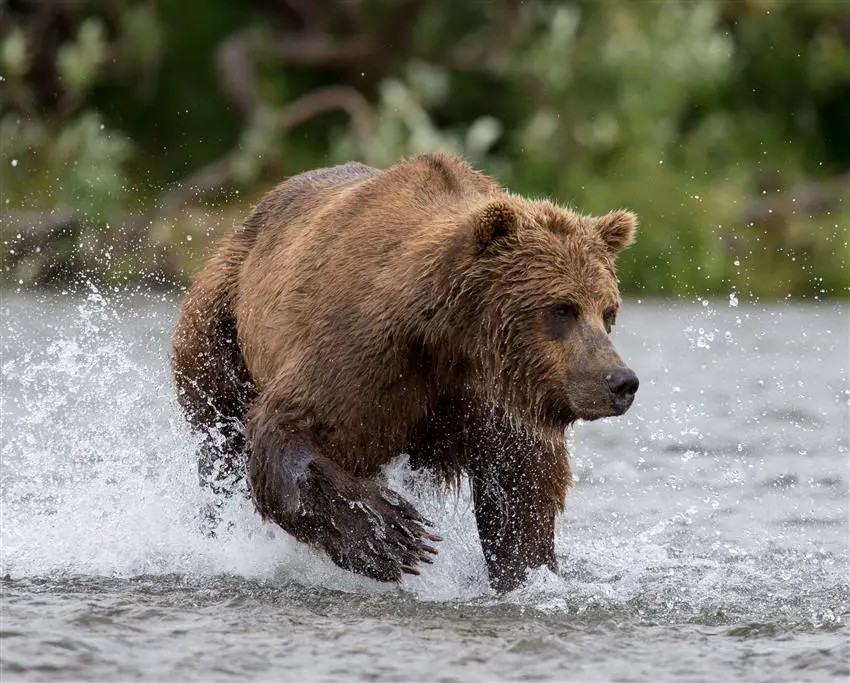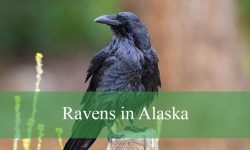Alaska is one of the last true strongholds for the majestic brown bear. With its vast wilderness, abundant salmon streams, and untouched mountains, the state provides the ideal home for one of North America’s largest predators. Known scientifically as Ursus arctos, brown bears in Alaska inspire both awe and respect, drawing thousands of wildlife enthusiasts and photographers from around the world. Their role as apex predators makes them critical to the ecosystem, shaping populations of prey and maintaining balance in the wilderness.
Understanding brown bears in Alaska requires a closer look at their biology, behaviors, and habitats. While their sheer size captures attention, it is their adaptability and intelligence that allow them to thrive across such diverse landscapes. Observing these creatures in the wild also provides valuable insights into conservation efforts, as Alaska remains one of the few regions where healthy populations of brown bears continue to exist.
In this guide, we will explore the key facts about brown bears, their distinctive behaviors, and the ways to properly identify them in the wild. From their enormous physical stature to their unique feeding patterns, the brown bears of Alaska reveal a fascinating story about survival and natural history.
Physical Characteristics of Brown Bears

Brown bears in Alaska are among the largest carnivores in the world. Adult males typically weigh between 600 and 1,200 pounds, though in coastal areas where food is plentiful, individuals can exceed 1,500 pounds. Females are generally smaller, averaging between 300 and 800 pounds, but still appear massive when compared to most other wildlife species. Their height at the shoulder ranges from three to four and a half feet when on all fours, and they can tower over eight feet tall when standing on their hind legs.
One of the most distinctive features of brown bears is the muscular hump located on their shoulders. This hump is a concentration of muscle mass that gives them incredible strength, especially for digging. Their long, curved claws, which can grow up to four inches, are not only formidable weapons but also effective tools for unearthing roots or capturing prey. Unlike black bears, brown bears have a dish-shaped face and short, rounded ears, which help observers identify them at a distance.
Their fur color ranges widely, from blonde to dark brown, and can even appear almost black in some individuals. Seasonal changes, diet, and genetics influence the variation in coat coloration. While their name suggests a uniform brown appearance, the diversity in fur tones makes them visually striking animals, each one unique in its pattern and shading.
Habitat and Distribution in Alaska
Alaska provides an immense and varied environment for brown bears, ranging from coastal areas rich in salmon to alpine meadows and tundra plains. They can be found throughout most of the state, except on islands south of Frederick Sound in the Southeast and in the western portion of the Brooks Range. Coastal populations, such as those in Katmai National Park, Kodiak Island, and Lake Clark, are particularly renowned for their size and density.
The difference between coastal and inland habitats significantly influences bear populations. Coastal regions, with their nutrient-rich salmon runs, allow bears to grow larger and reproduce more successfully due to the abundance of food. Inland bears, often referred to as grizzlies, survive on a leaner diet consisting of roots, berries, and small mammals, which results in generally smaller body sizes.
The remote and rugged terrain of Alaska ensures that brown bears maintain extensive ranges. A single bear may roam across hundreds of square miles, especially in areas where food is scarce. This wide distribution emphasizes the importance of preserving large, unfragmented habitats that allow bears to thrive and maintain genetic diversity.
Feeding Habits and Diet
Brown bears are omnivores, and their diet reflects both their adaptability and the richness of Alaska’s ecosystems. During spring, when the snow melts and vegetation emerges, bears feed on tender shoots, grasses, and roots. They also take advantage of winter-killed animals, scavenging carrion to restore energy lost during hibernation.
Summer marks the start of the salmon runs, which play a vital role in the lives of Alaska’s brown bears. Bears gather along rivers and streams, using their powerful claws and lightning-fast reflexes to catch salmon leaping upstream. This protein-rich diet allows them to build the massive fat reserves necessary for surviving the long winter hibernation. In coastal areas, it is not uncommon to see dozens of bears fishing in the same location, creating iconic scenes of Alaskan wildlife.
In addition to fish, bears consume berries, nuts, and insects during late summer and fall. This period of intense feeding, called hyperphagia, prepares them for hibernation by doubling their body weight. While they are capable hunters, capturing moose calves or caribou when the opportunity arises, most of their caloric intake comes from plant matter and salmon. Their ability to switch between food sources depending on seasonal availability highlights their remarkable adaptability.
Behavior and Social Structure
Brown bears are generally solitary animals, though their behaviors shift depending on food availability. Outside of the breeding season and areas of concentrated resources like salmon streams, adult bears prefer to avoid one another. However, where food is abundant, multiple bears may gather, establishing a complex social hierarchy that dictates access to prime feeding spots.
Males, being larger and more dominant, usually secure the best fishing areas. Females with cubs often occupy the periphery, both to avoid confrontations with larger males and to protect their young. Interestingly, bears communicate through body language, vocalizations, and scent markings, which play important roles in reducing conflict. Displays such as standing tall, swatting the ground, or vocalizing serve as warnings to maintain personal space.
Despite their intimidating size and strength, brown bears show moments of playfulness, particularly younger individuals. Cubs often wrestle and chase one another, behaviors that build strength and social skills needed later in life. Adult bears may also engage in mock fights, testing their power and reinforcing dominance without serious injury. These behaviors illustrate the complexity of brown bear social life beyond the stereotype of solitary predators.
Reproduction and Life Cycle
The breeding season for brown bears in Alaska typically occurs between May and July. During this time, males may travel great distances in search of receptive females, competing fiercely with rivals. Courtship involves following the female and often engaging in aggressive encounters with other males.
Female brown bears experience delayed implantation, a fascinating adaptation in which fertilized eggs do not immediately implant in the uterus. Instead, the embryos remain dormant until late fall, when the female enters her den. If she has accumulated enough fat reserves, the embryos implant and begin developing. This ensures that she has sufficient energy to support pregnancy and nursing during hibernation.
Cubs are usually born in January or February while the mother is in her den. Weighing less than a pound at birth, the cubs are blind, hairless, and completely dependent on their mother’s milk. Litters typically range from one to three cubs, and they remain with their mother for up to three years. During this time, she fiercely protects them, teaching essential survival skills such as foraging and avoiding danger.
Hibernation Patterns
Hibernation is a crucial survival strategy for brown bears in Alaska. As winter approaches and food becomes scarce, bears retreat to dens dug into hillsides, under tree roots, or within caves. These dens provide insulation against extreme cold, allowing bears to conserve energy throughout the harsh winter months.
Unlike true hibernators, brown bears enter a state of torpor in which their body temperature drops only slightly. Their heart rate slows significantly, and they can survive without eating, drinking, or eliminating waste for several months. During this period, they rely entirely on fat reserves built up during the summer and fall.
Pregnant females give birth in their dens and nurse their cubs until spring, making hibernation not just a time of rest but also of reproduction. By April or May, as temperatures rise and snow begins to melt, bears emerge from their dens in search of fresh vegetation and carrion. The timing of den emergence varies depending on food availability, sex, and reproductive status.
Identification Tips for Observers
For wildlife enthusiasts hoping to identify brown bears in Alaska, there are several features that set them apart from other bear species. The most reliable characteristic is the pronounced shoulder hump, absent in black bears. Their face is broad and concave, in contrast to the straighter profile of black bears. Additionally, their claws are noticeably longer and more visible, even from a distance.
When observing in the wild, size and behavior also provide clues. Brown bears tend to appear larger and more imposing, especially in coastal regions where food abundance results in enormous body mass. Their movements often seem deliberate and powerful, whether they are foraging along riverbanks or patrolling open meadows.
Photographers and naturalists should always maintain a safe distance when identifying bears. Binoculars or long-lens cameras are the best tools for appreciating their features without disturbing their natural behaviors. Respect for their space ensures both human safety and the wellbeing of the animals.
Best Times and Locations to Observe Brown Bears in Alaska
Alaska offers some of the most remarkable bear-viewing opportunities in the world. The best times to observe brown bears are during summer and early fall, particularly from June through September, when salmon runs attract bears to rivers and streams. During these months, bears are highly active, feeding for long hours each day to build fat reserves.
Prime locations for bear watching include Katmai National Park, especially the famous Brooks Falls, where bears congregate to catch leaping salmon. Lake Clark National Park also provides exceptional viewing opportunities with guided tours that allow for safe observation. On Kodiak Island, one of the densest bear populations in the world, encounters with these giants are common in both coastal and inland areas.
Morning and evening hours are generally the most productive times for sightings, as bears are more active during cooler parts of the day. Observers should always follow park guidelines and rely on professional guides when entering bear habitats, ensuring safety while experiencing one of Alaska’s most iconic wildlife encounters.
Conservation and Human Interaction
Although Alaska’s brown bear populations remain healthy compared to other regions, they face ongoing challenges from habitat loss, climate change, and human interaction. Development projects and increased tourism can encroach on vital habitats, while shifts in salmon populations due to warming waters may reduce essential food sources.
Responsible wildlife management and conservation policies are crucial to maintaining stable populations. Hunting regulations, habitat protection, and strict guidelines for human behavior in bear country all contribute to sustaining healthy bear populations. Education programs emphasize the importance of minimizing conflict by properly storing food and avoiding close encounters.
For humans, respecting bears is key to coexistence. By maintaining distance, following park regulations, and recognizing the ecological importance of these animals, people can ensure that Alaska continues to support thriving populations of brown bears for generations to come.
Fun Facts About Brown Bears in Alaska
One fascinating fact about Alaska’s brown bears is that Kodiak bears, a subspecies found only on Kodiak Island, are among the largest bears in the world. Some individuals rival the size of polar bears, making them true giants of the animal kingdom.
Brown bears also possess an incredible sense of smell, estimated to be seven times stronger than that of a bloodhound. This acute sense allows them to detect food from miles away, an essential survival adaptation in the vast Alaskan wilderness.
Another surprising fact is their speed. Despite their bulk, brown bears can run up to 35 miles per hour for short distances. This speed, combined with their power, makes them formidable predators and a reminder of why observing them requires caution and respect.
Conclusion
Brown bears in Alaska represent the untamed spirit of the wilderness. Their immense size, fascinating behaviors, and essential role in the ecosystem make them one of the most iconic animals in North America. From fishing in salmon-rich rivers to raising cubs in remote dens, their lives are deeply tied to the rhythms of Alaska’s landscapes.
By learning how to identify, understand, and respect these animals, visitors and residents alike can deepen their appreciation for one of nature’s greatest creatures. Ensuring their conservation is not just about protecting a single species but about preserving the health of entire ecosystems that depend on their presence.
Alaska remains one of the best places on Earth to witness brown bears in their natural environment, offering unforgettable encounters that connect people to the wild. With continued respect and conservation, future generations will also have the privilege of marveling at these giants of the north.
FAQs about Brown Bears in Alaska
How big do brown bears in Alaska get?
Brown bears in Alaska are among the largest in the world. Adult males often weigh between 600 and 1,200 pounds, while coastal bears can exceed 1,500 pounds due to their salmon-rich diet. Females are smaller, but still impressive, averaging between 300 and 800 pounds.
Where is the best place to see brown bears in Alaska?
Some of the best places include Katmai National Park, Lake Clark National Park, and Kodiak Island. Brooks Falls in Katmai is world-famous for bear viewing, especially during the salmon runs from June to September.
What do brown bears in Alaska eat?
Their diet varies with the seasons. In spring they eat grasses and roots, while summer and fall bring an abundance of salmon and berries. They also feed on insects, carrion, and occasionally prey on moose calves or caribou.
Are brown bears in Alaska dangerous to humans?
While brown bears are not naturally aggressive toward humans, they can be dangerous if surprised, threatened, or if food is involved. Keeping a safe distance, storing food properly, and respecting their space helps minimize risks.
How do brown bears in Alaska survive the winter?
They survive by hibernating in dens during the harsh winter months. Before winter arrives, they enter a period of hyperphagia, eating constantly to build fat reserves. Pregnant females also give birth during hibernation, nurturing their cubs until spring.
What is the difference between brown bears and grizzly bears in Alaska?
Both belong to the same species, Ursus arctos. The main difference lies in habitat and diet. Coastal brown bears have access to rich salmon runs and grow much larger, while inland grizzlies live on a leaner diet of roots, berries, and small mammals, resulting in smaller body size.






